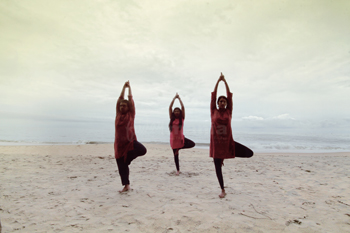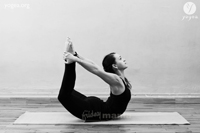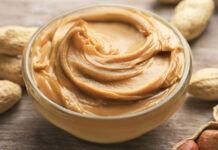 by Sudakshna Thampi Y2S Yoga Kerala is the diabetes capital of India with a prevalence of diabetes as high as 20% ─ double the national average of 8%.
by Sudakshna Thampi Y2S Yoga Kerala is the diabetes capital of India with a prevalence of diabetes as high as 20% ─ double the national average of 8%.
Studies show that including yoga in your daily regime can help reduce the level of sugar in the blood, along with a lowered blood pressure and weight. The practice of yoga helps in managing and controlling diabetes and acts as a preventive measure for Type 2 diabetes, which is often caused by hectic lifestyle and eternal stress.
Studies have confirmed that practising asanas squeezes and compresses the abdomen and helps stimulate the pancreatic secretions or hormonal secretions. As a result, more insulin is pushed into the system. Practising the postures in a relaxed manner, without exertion, meditation and breathing techniques help most patients control the triggers or causes of diabetes.
Follow these four key yoga postures
Vrikshasana
Benefit:
Helps stimulate the hormonal secretion of the pancreas.
Method
-Stand straight and keep your feet close to each other. Your knees, legs and hand should be held straight.
-Now bring your right foot and keep it on your left thigh. Try to make a right angle. If you are unable to keep your foot on the thigh, try to keep your foot on the left leg wherever you feel comfortable and maintain balance. But remember your right toe should point down wards. Your body balance should depend on the left leg.
-Join your palms and bring them to the middle of your chest and keep the figure pointing upwards. Slowly move your hands overhead. Raise your arms over your head. Your arms should be slightly bent.
-Stand straight, look in front and try to be relaxed.
-Stay in this position for about 10 seconds. Breathe normally.
-Slowly bring your hands in the middle portion of the chest same as before, bring your right leg to the ground and come back in the starting position. -Repeat the same procedure with the other leg.
-Try to repeat the whole procedure two to three times.
Dhanurasana (Bow pose)
Benefit:
Improves the functioning of pancreas and intestines. Thus helps in controlling blood sugar levels. Organs like liver, pancreas, and enzyme producing organs will function actively by practicing this asana.
Method:
-Lie on your stomach with your feet hip width apart and your arms by the side of your body.
-Fold your knees and hold your ankles.
-Breathing in, lift your chest off the ground and pull your legs up and back.
-Look straight ahead with a smile on your face. Curve your lips to match the curve of your body.
-Keep the pose stable while paying attention to your breath. Your body is now taut as a bow.
-Continue to take long deep breaths as you relax in this pose. But don’t get carried away. Do not overdo the stretch.
-After 15 -20 seconds, as you exhale, gently bring your legs and chest back to the ground.
-Release the ankles and relax.
Halasana (Plough Pose)
Benefit:
It stimulates the pancreas, spleen and activates immune system by massaging all the internal organs including pancreas. It improves kidney and liver functioning and strengthens the abdominal muscles. It also rejuvenates the mind.
Method:
-Lie on your back with your arms beside you, palms downwards.
-As you inhale, use your abdominal muscles to lift your feet off the floor, raising your legs vertically at a 90-degree angle. Continue to breathe normally and supporting your hips and back with your hands, lift them off the ground.
-Allow your legs to sweep in a 180-degree angle over your head till your toes touch the floor.
-Your back should be perpendicular to the floor. This may be difficult initially, but make an attempt for a few seconds.
-Hold this pose and let your body relax more and more with each steady breath.5 After about a minute (a few seconds for beginners) of resting in this pose, you may gently bring your legs down on exhalation. -Avoid jerking your body, while bringing the legs down.
Ardha Matsyendrasana (Half Twist Pose)
Benefits:
This asana massages the kidneys, pancreas, small intestines, gall bladder and liver, helping to stimulate digestion and squeeze out toxins. Useful for diabetics, with concentration on the pancreas.Increases the elasticity of the spine, tones the spinal nerves.
Method
-Sit on the carpet, stretch the legs straight.
-Fold the right leg. Keep the right leg’s heel touching the left leg’s knee.
-Take the right hand to back of the waist twisting your trunk, spread palms inside and place it on the carpet.
-Bring the left hand close to right knee and hold the right leg’s ankle or big toe with the left hand.
-Twist the head and shoulder to right side and look straight to the right shoulder’s side (i.e back side).
Pranayama
Aside from asanas, breathing exercises especially anulom vilom (alternate nostril breathing) and kapalbatti (one-time inhale; exhale 30 to 50 times quickly) is extremely beneficial.Anulom vilom is found useful in diabetes as alternate nostril breathing has calming effects on the nervous system. This manages the stress levels, helping in diabetes treatment.
Kapalbhatti, on the other hand, stimulates the pancreas to release insulin, thus helping control diabetes. Pranayam makes the mind calm, thus balancing the interaction between the pituitary gland and the pancreas. These practices helps stabilise sugar levels.
The key to managing diabetes successfully is to beat stress, as it is not only a major cause, but also an aggravating factor.
Practicing meditation regularly for a few minutes acts as an excellent stress-buster for the mind and bodyMeditate everyday religiously to experience the change.It’s time to stretch those muscles, quiet your mind and leave diabetes behind.
With love,
Sudakshna Thampi
Y2S Yoga
Girinagar , Cochin
8281 5252 09









































